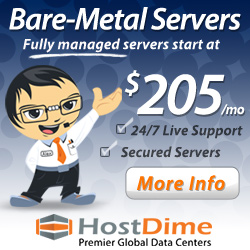The following are my takeaways from several “link building” sessions I attended on day three of PubCon Las Vegas which include Links With Maximum Juice and Minimum Risk, Real World Low-Risk High-Reward Link Building, SEO 2011 – Greg Boser, Link Building 2011 – What’s Hot, and Daily Social Media Success.
I’m not intending to cover each session in detail but rather provide key tips and takeaways from each session.
1. Links With Maximum Juice and Minimum Risk
This session included the following panelists – Loren Baker, Arnie Kuenn and Kenny Hyder
- Before this session started, a member of the audience pointed out a statement Matt Cutts made in his earlier keynote where he essentially told everyone that a lot of the links we are building do not count to which I would say, “Don’t believe everything Matt Cutts says.” He provides a lot of “politically correct” answers to SEO-related questions. Members of the panel said “relevance” is key to which I agree.
- In the process of trying to build relationships with influential bloggers, think about running a paid ad on their site for short period of time in order to jump-start the relationship. In other words, bloggers pay attention when money is involved.
- S.N.O.W. approach – scale, natural, occurrences widely. Look at your natural link portfolio in order to determine what should be occurring naturally when aggressively going after links. The more natural your link approach is, the more sustainable it is.
- Effective content marketing is essentially “providing a reason” for people to want to link to you and share socially as well. One example Loren Baker provided was Sun Microsystems extensive “glossary of terms” which by the way ranks # 3 for glossary.
- One of the biggest magnets for natural links is “the lists” type of posts or white papers. You’d think it is Infographics and once in awhile they are but the “top whatever” types of posts seem to attract the most interest compared to other types of content.
- Interviews are also a great way to attract natural links. Text, podcast or video are all acceptable formats.
- Free eBooks on sites like HubSpot can attract tons of natural links.
- “Seasonal” content such as posts or Infographics can attract natural links for years and years so keep them active and check stats periodically.
- Keyword research is foundational not only with SEO, but link building as well. Don’t forget the long tail key phrases. Utilize Yahoo Answers, LinkedIn, etc., search and see what the “current conversation” is for content ideas. Finally, use SEOmoz Site Explorer “top page” section to look at what competitor pages are getting linked to the most.
2. Real World Low-Risk High-Reward Link Building
This session included the following panelists – Aaron Shear, Russ Jones, Alex Pyatetsky and Dixon Jones
- Alternative inbound link opportunities for e-commerce sites: Use LinkConnector for affiliate linking which links direct from affiliate to merchant without having to go through affiliate first as with most affiliate programs.
- When reaching out to bloggers asking them to write about you, don’t just send them form email but rather provide them an incentive like a gift card or free stuff.
- Archive your press releases and make sure they are crawlable.
- Controversial link bait can generate links, often times from authority sites. BeautifulPeople.com experienced this when they issued a press release stating that they were going to kick out all the fat people. Sometimes however, the effect is not long term. In their case, they affected the relationship in a negative way and because link building is all about relationships, they failed in this manner.
- Think about pro-bono stuff such as helping out a charitable organization to obtain links.
- A major mis-conception in link building is that paid links are more risky than non-paid links. What needs to be factored in is the risk factor which equates to how much money can be lost. For example, if you do paid blog reviews and end up getting penalized for one or more of them, you will have to reach out to the blogger and ask them to remove that link which may or may not ever happen. Same is true with article syndication sites such as EzineArticles and Idea Marketers. In those cases, it is highly unlikely they will ever respond to requests to remove articles.
- Thee types of links: fact citation, content aggregation and interest links. For fact citation, look for Wikipedia articles where portions of the article seeks citation sources, then create that source and link to it. For content aggregation such as in Infographics, make available embed codes so you can control the linking and the anchor text.
- A link is not a link unless Google has actually indexed it. So think about creative ways to get those pages indexed.
- Utilize Zemanta to push content. Zemanta is a revolutionary new platform for accelerating on-line content production for any web user. Any user-created text (a blog post, article or web page) is directly “read” by Zemanta, which recognizes all contextual content. Zemanta then combs the web for the most relevant images, smart links, keywords and text, instantly serving these results to the user to enrich and inform their content. What’s more, Zemanta can be deployed on all major content publishing platforms and web browsers through a simple plug-in.
3. SEO 2011 – Greg Boser
This session included the following panelist – Greg Boser
- Site quality has replaced page quality. Whereas once upon a time the goal was to create as many diverse pages as possible to expand organic search reach and visibility, now it has become more about creating a site, a brand and even content that real people are willing to share. With Google’s acquisition of PostRank and move towards trying to determine human intent, strong social signals to a site have become more important than ever.
- Being able to recognize social signals, it is easy for Google to understand if actual people like a specific page or piece of content. No social signals, page will not be deemed that worthy.
4. Link Building 2011 – What’s Hot
This session included the following panelist – Jim Boykin
- About creating content, mass content is out with Panda updates making quality content the key today.
- Jim Boykin likes to find what .edus and .govs are linking out to for any given topic. After content is created, one then needs to reach out to those who are linking and ask that they link to your content as well.
- One of the things Google is looking for at the page level is Author Rank (rel=author). So obtaining your Author Rank status and then associating it with your content is going to become more and more important.The following from a recent Google patent applications backs up this point.
“The name of the writer can be used to influence the ranking of web search results by indicating the writer responsible for a particular content piece…Assuming that a given writer has a high reputational score, representing an established reputation for authoring valuable content, then additional content authored and signed by that writer will be promoted relative to unsigned content or content from less reputable writers in search results.”
- Once Author Rank is established, be sure to create content beyond your own blog/site (i.e. blogs, forums, answer sites, etc.).
5. Daily Social Media Success
This session included the following panelist – Chris Winfield
- For social media marketing to be effective, one has to put the time into it. It’s not that you have to be in everyplace at every time, but rather where your customer base hangs out.
- Try to add new social contacts every week and make sure your own social profiles provide an explanation of what you are all about. The latter is especially true when reaching out to people you do not personally know.
- Regarding videos, consider hosting video on your own site as you will then be deemed as the authority for that site.










Zemanta is also very useful for inbound link building, not just contextual outbound links and images. After it crawls your post it will serve up related posts which you can embed throughout or at the end of an article. I’ve found more often than not the sites you link to will approve a useful pingback, building the # of linking root domains to your URL.
Social media marketing campaigns are really not that easy and eats a lot of time. But most of time, the use of different social media is a fun filled activity. If you are on it, you’ll just think of connecting, communicating and learning rather from your goal which is marketing.
I’m just starting with social media marketing and I must say that this post has been very helpful to me. Marketing using social networking sites may eat a lot of your time but its all worth it. Since most social networking sites are free, more and more users are getting in to it. In return, you will have a wide avenue of promoting your business/website, and that’s all for free.
I have no idea how Author Rank works. I just know that when you have a reputable name or a positive profile in the Internet, Google will consider you searchable along all the things such as website/blogs/content associated with your name.